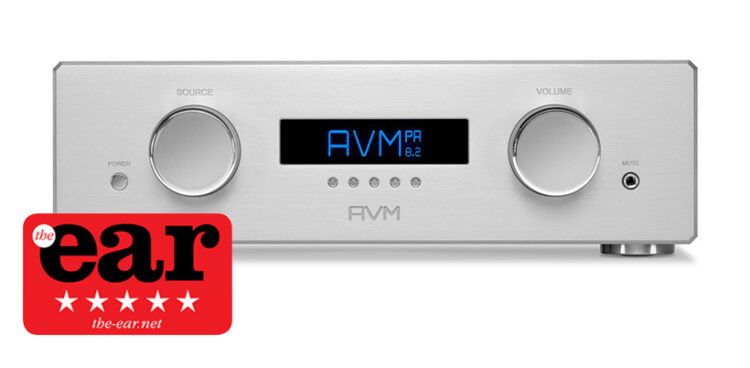AVM announced their 30th anniversary last year with a new entry level range and at this year’s Sound & Vision Bristol show I asked MD Udo Besser how he got into the hi-fi business, his jokey response was: “Very easy, I just filled in a form, it was the wrong form!”. He went on to describe a career path that started at Burmester where he stayed until 2009 and bought AVM the following year. Which is why this clearly well established brand had such a low profile up until recently, the fact that it is now distributed in the UK by PMC has of course done a lot to put it on the map but that probably would not have come about without Udo’s involvement.
At the other end of the company’s extensive catalogue to the AVM 30 range lies the Ovation 8.2 models, these are the biggest and most ambitious it makes and carry the heftiest price tags as a result. The PA 8.2 is in the nearest thing to an all analogue preamplifier that AVM makes, in fact it is all analogue unless you add a DAC module, it’s AVM at its most audiophile purist. For a start it’s modular inasmuch as it can have as many analogue inputs as the broad rear panel can accept, or as few, the review sample had an MM/MC phono stage alongside balanced (XLR) and unbalanced (RCA) line inputs but you can add modules for an FM tuner, a ‘Tone Card’ which adds tone controls to the whole preamp, and a DAC module with inputs for USB, coax and digital connections where all four inputs can be connected simultaneously.
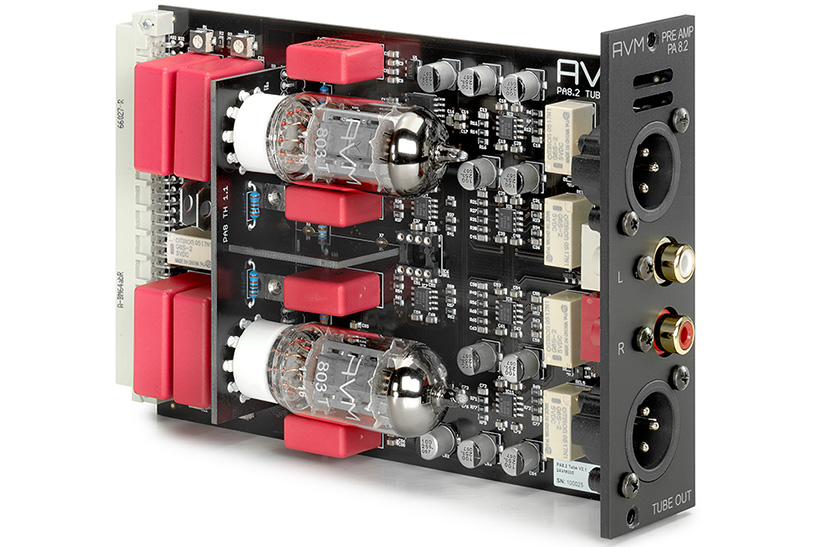
This latter feature is a clue as to the intelligent operation of the PA 8.2 as a whole, essentially its front panel display will only show the input modules that are onboard, so if you only have two modules those will be the only ones you have to scroll through. Which seems obvious but in fixed input preamplifiers you have to scroll through all the inputs regardless of whether they are required. So in the case of the digital input card the display will show the two coax, optical and USB inputs separately even though they are on the one module. Essentially it makes this complex product easy to use and that can only be a good thing.
The output module has both RCA and XLR connections and comes in two flavours, tube or transistor, the glass powered option using a double triode valve called the AVM 803 T which is clearly not the pentode transmitter tube of the same name. This output tube provides a balanced output and has an independent power supply and circuitry that is said to offer “a lifespan of several 10,000 hours”. The transistor option which is standard on the PA 8.2 is a redesigned version of that found across the Ovation range with a DC couple signal path where attenuation is applied at the output, which is the same with the tube output, a PA 8.2 can have up to three output modules of either type.
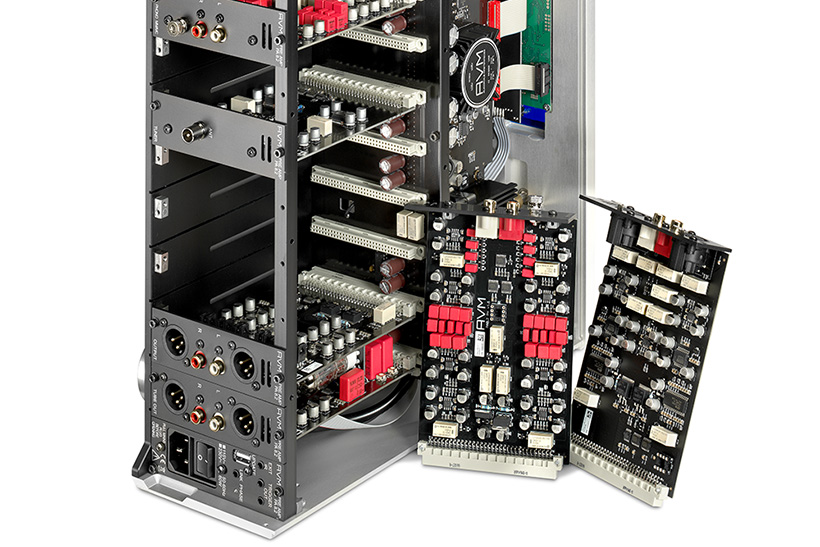
Standard features on this substantial beast include a glass window in the top of the case so that you can see the various in- and output modules, a class A headphone output and a very attractive slimline remote control in the same brushed aluminium finish as the casework of the preamplifier. The PA 8.2 is designed for use with the Ovation series SA 8.2 and MA 8.2 power amplifiers but can of course be used with any decent power amp as was the case for this review.
Sound quality
I used my ATC P2 power amp, a 150 watt design that while not in the same price league is a highly capable and revealing piece of kit. Prime among the PA 8.2’s qualities is a precision that is rare among preamplifiers as a breed and even more scarce on those with tubes in the signal path, in fact there is very little that you could identify as tubey about this component. It delivers extremely low and controlled bass with ease, something obvious when playing Lorde’s ‘Royals’ which has a waft to it that doesn’t often come out of my PMC Fact.8 speakers. As I was using a Chord DAVE DAC at the time I decided to see if it would be beneficial to bypass the AVM and use the DAC’s onboard volume control which is no slouch, but the small improvement wrought by the change suggested that the PA 8.2 does very little to undermine transparency which is quite an achievement given that this jump removed a length of interconnect and a fair amount of electronics.
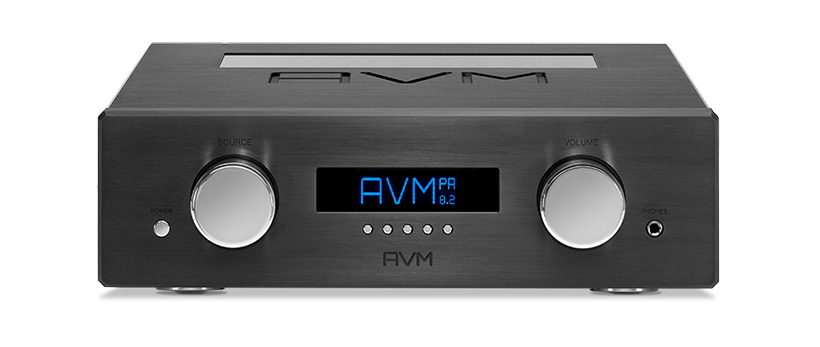
Corea, Clarke and White’s Forever is a fine live recording and Stanley Clarke’s ‘La Cancion de Sofia’ the highlight track, this was presented in a precise and well defined fashion with excellent image width and the lyricism of the double bass solo in full effect. It’s a vividly detailed, rich and tangible sound that puts you in the room and makes everything else seem inconsequential. Which is the sort of escape great sound systems should provide. A Haydn quartet piece illustrated just how much tone colour there was in the recording, in hindsight this was a clue to the tube’s presence, as well as the lovely musical flow of the playing. There was also plenty of muscle in Esperanza Spalding’s bass playing on ‘Earth to Heaven’ (Emily’s D+Evolution) where the voice is nicely illuminated and focused while the layers of the mix open up around her.
I had the tasty Goldring 1042 moving magnet cartridge on a Rega RP8 turntable so plugged it into the phono module on the PA 8.2 and enjoyed Nina Simone’s Colpix Singles album, a recording from her early years that with this system reflected the nature of mono recordings in the fifties to a tee. The quality of the performances also came through very strongly indeed, the preamplifier making it obvious that the cartridge was warming up as it traversed the side and revealing an awful lot about the musicianship involved. This AVM is unusually good at revealing the fine details of everything you play, separating out the various elements within a mix so that it’s easy to appreciate just what everyone is doing. Which means that when you want to play something intense or complex it won’t get muddled in the way that so many preamplifiers do. The tendency is to blame the recording when a piece of music seems like hard work but often it’s colorations and distortions within key elements like the preamp that are the problem.
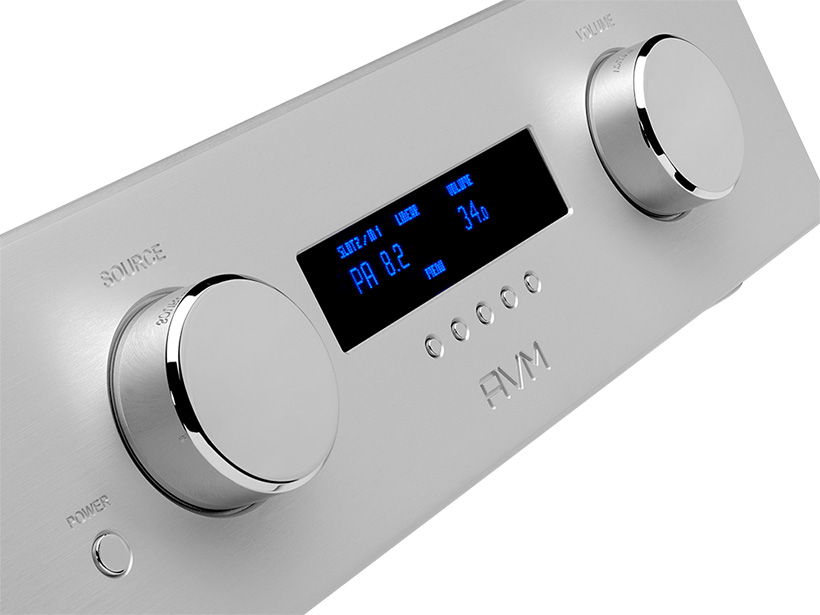
You can tell that this AVM has very little in the way of distortions and colorations because nothing is given undue emphasis, it treats everything in a consistent and linear fashion. This can make it sound a little emotionally detached at times but when that happens you need to look further up the chain to the source and possibly the recording. If you want transparency, and you do want transparency, then it comes with a price which is the need for the same degree of neutrality in the elements that supply the signal. It would have been interesting to have contrasted the tube and transistor output options on this just to see what the glowing valve brings to the picture beside great tone but that would be something to do if you decide to audition it. As it stands this is an extremely well made and finished piece of kit with a degree of flexibility that’s rare in the high end, I suggest you treat yourself to a dem.


